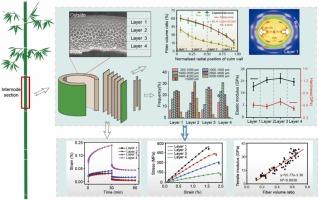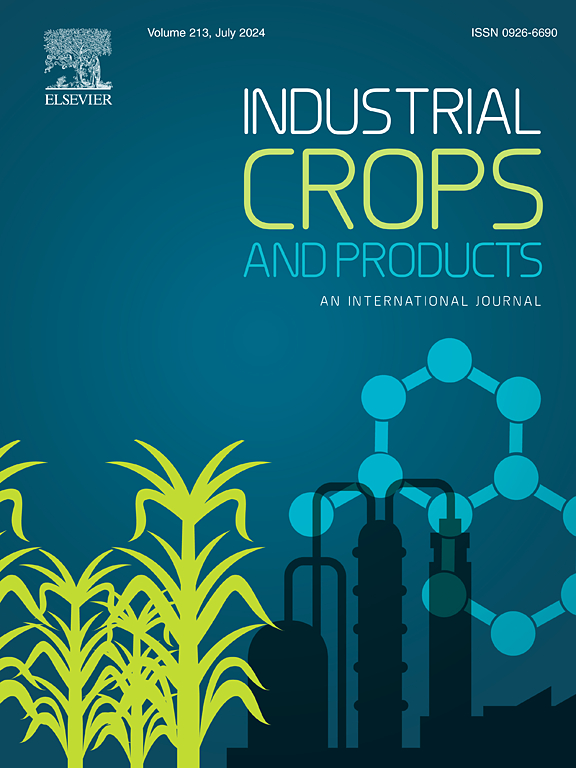竹材径向层次特征及其对拉伸性能的影响
IF 5.6
1区 农林科学
Q1 AGRICULTURAL ENGINEERING
引用次数: 0
摘要
竹子表现出独特的层次结构,使其能够在自然条件下调整其对外部负载的抵抗力。然而,关于竹的结构和性能的基本数据缺乏。本工作从宏观到超微观阐述了BTM的结构和性能,并探讨了可能影响BTM拉伸性能的因素。结果表明:BTM在纤维体积比(Vf)、化学成分、纤维形态、微纤维角度、晶粒尺寸、结晶度、抗蠕变性能和拉伸性能上呈现显著的梯度变化,而其纤维细胞壁的力学性能沿BTM茎的径向方向相对恒定。BTM层的拉伸破坏通常形成“扫帚形”,这受纤维束、薄壁组织和血管的分布和形态的影响。外秆的抗拉强度和模量分别为489.05 MPa和37.12 GPa。统计分析表明,相对于微观和超微观特征,宏观结构的变化对BTM的拉伸性能有显著影响。BTM含有95% %的单斜晶,晶格常数接近其他高等植物。混合法则在这种材料中是无效的。本文章由计算机程序翻译,如有差异,请以英文原文为准。

Hierarchical characteristics in radial direction of Bambusa textilis McClure and their influence on tensile properties
Bamboo exhibits a unique hierarchical structure, allowing it to adjust its resistance to external load in natural conditions. However, there is a lack of basic data on the structure and performance of Bambusa textilis McClure (BTM). This work elucidates the structure and properties of BTM from macroscopic to ultra-microscopic and explored the factors potentially influencing the tensile properties of BTM. The results show that BTM exhibits significant gradient changes in its fiber volume ratio (Vf), chemical components, fiber morphology, microfibril angle, crystallite sizes, crystallinity, creep resistance, and tensile properties, while the mechanical properties of its fiber cell wall are relatively constant along the radial direction of the BTM culm. The tensile failure of BTM layers commonly forms a “broom shape”, which is affected by the distribution and morphology of the fiber bundles, parenchyma, and vessels. The promising tensile strength and modulus in the outer culm were 489.05 MPa and 37.12 GPa, respectively. Statistical analysis showed that the change in macroscopic structure exerts significant effect on tensile properties of BTM relative to the micro-and ultra-microscopic features. BTM contains 95 % monoclinic crystals with lattice constants approximating those of other higher plants. The rule of mixture was invalid in this material.
求助全文
通过发布文献求助,成功后即可免费获取论文全文。
去求助
来源期刊

Industrial Crops and Products
农林科学-农业工程
CiteScore
9.50
自引率
8.50%
发文量
1518
审稿时长
43 days
期刊介绍:
Industrial Crops and Products is an International Journal publishing academic and industrial research on industrial (defined as non-food/non-feed) crops and products. Papers concern both crop-oriented and bio-based materials from crops-oriented research, and should be of interest to an international audience, hypothesis driven, and where comparisons are made statistics performed.
 求助内容:
求助内容: 应助结果提醒方式:
应助结果提醒方式:


